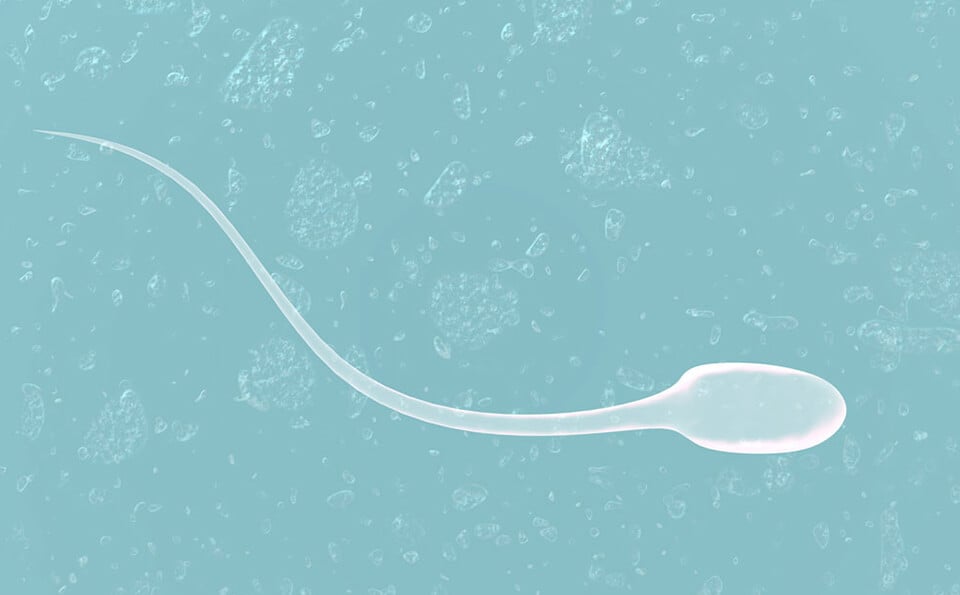
How Microfluidics May Improve Sperm Selection
Male infertility.
According to the American Society of Reproductive Medicine, the male partner is either the sole or a contributing cause in 4 of 10 cases of infertility. Factors that may contribute to male factor infertility include past infections, hormonal imbalances, lifestyle, environment, or medical conditions. Beginning in their mid-30s, men also have a biological clock that can contribute to a gradual reduction in fertility. And after age 40, the risk of passing on genetic abnormalities to their children increases.1
Adding concern is a meta-analysis of 185 studies in nearly 43,000 men, which found that sperm concentration (SC) and total sperm count (TSC) had decreased by 50–60 percent between 1973 and 2011 in North America, Europe, Australia, and New Zealand.2
With a downward trend in male fertility, researchers are therefore continually looking for ways to select the most high-quality, motile sperm to improve the success rates of assisted reproductive technology (ART). One technique with potential is called microfluidics.
How sperm is currently selected.
Today, a procedure called intracytoplasmic sperm injection (ICSI) is often used to address male factor infertility. It involves injecting a single sperm cell directly into an egg. However, for this process, embryologists seek the highest-quality sperm.
Currently, embryologists select sperm for in vitro fertilization (IVF)/ICSI based on how the sperm look and move. Standard procedures include the swim-up technique and density gradient separation. Each has its weaknesses. Density gradient separation can select viable sperm, but it may also produce high DNA fragmentation, causing harm to the sperm. The swim-up technique separates "good swimmers" from others. But where sperm counts are low or sperm motility is reduced, these and other methods are not the most efficient ways to select high-quality sperm. In addition, with techniques currently used, results may vary from embryologist to embryologist.3
What is microfluidics?
With many potential applications, microfluidics is a multidisciplinary field involving the behavior, precise control, and manipulation of fluids that are geometrically constrained to a very small scale on a microfluidic chip that contains a pattern of molded or engraved microchannels.
As they wind their way to the egg, sperm travel in tiny mucosa microchannels from cervix to uterus—an environment that acts as a natural filter to select functional sperm. Microfluidics technology can mimic this natural microenvironment of the female reproductive tract. By doing so, it may help in the selection of the "best-in-class" sperm for ICSI. 3
Research findings.
Along with other researchers, Uktan Demirci, PhD, of Stanford has evaluated a simple and cost-effective microfluidic design for sperm sorting, evaluating channel length and travel time to maximize sorting capability. It allowed them to separate motile sperm and show differences in motile sperm at channel inlets and outlets, demonstrating the system's sorting capability. It also verified the importance of sperm exhaustion in microfluidic sperm sorting.
The researchers found that microfluidics resulted in sorted sperm with significantly higher motility and percentage of motile sperm compared to non-sorted sperm as well as those being evaluated using another technique. Based on their findings, the researchers believe this simple, easy-to-use, and efficient technique may ultimately improve upon current methods of sperm selection, especially in a field that is quite labor intensive and requires repeatable, reliable steps. The hope is to ultimately improve outcomes during IVF/ICSI.3
Sources
- ASRM: "Diagnostic evaluation of the infertile male: a committee opinion." Available at: https://www.asrm.org/globalassets/asrm/asrm-content/news-and-publications/practice-guidelines/for-non-members/diagnostic_evaluation_of_the_infertile_male_a_committee_opinion-noprint.pdf
- Levine H et al. Hum Reprod Update.2017;23(6):646–659. https://www.ncbi.nlm.nih.gov/pubmed/28981654
- Tasoglu S et al. Small.2013;9(20):3374–3384. https://www.ncbi.nlm.nih.gov/pmc/articles/PMC3821799</https:>
Categories
About the Blog
Welcome to the Pacific Fertility Center Blog! Nationally and internationally recognized for providing exceptional reproductive care, our team believes in empowering people with the knowledge they need to navigate their unique fertility journeys.
From information on the latest fertility treatments to valuable insights on egg donation, surrogacy, and everything in between, the Pacific Fertility Center Blog is your ultimate resource for all things reproductive care and support. Read on to learn more, and contact us today if you have any questions or want to schedule a new patient appointment.

